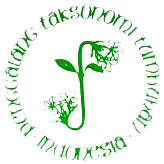A NEW DISTRIBUTION RECORD OF DECONICA OVEREEMII (AGARICALES, STROPHARIACEAE)
DOI:
https://doi.org/10.55981/floribunda.2024.4901Abstract
Atik Retnowati, Helbert & Supeni Sufaati 2024. A new distribution record of Deconica overeemii (Agaricales, Strophariaceae). Floribunda 7(4): 182–191 — Deconica overeemii has been previously reported from Java (Indonesia) and São Tomé Island (Africa), and we reported a new distribution record of the species from Sorong, Papua (Indonesia). The collection of D. overeemii was made during the mycological survey to Sorong in July 2022. The species recognized by having brown, with acute-conical papilla pileus, closed with 2–3 lamellulae, ellipsoid-rhomboid basidiospores, and clavate to mucronate-clavate, chryocystidia-like pleurocystidia. The identification process of Papuan materials using morphological characters supported by molecular data derived from ITS nrDNA produced D. overeemii. The species is similar to D. thailandensis and D. aureicystidiata. Fresh images of fruiting bodies, microscopic characters, and similar taxa are provided.
Downloads
References
Capella-Gutiérrez S, Silla-Martínez JM, Gabaldón T. 2009. trimAl: a tool for automated alignment trimming in large-scale phylogenetic analyses, Bioinformatics, 25(15): 1972–1973, https://doi.org/10.1093/bioinformatics/btp348.
Desjardin DE & Perry BA. 2016. Dark-spored species of Agaricineae from Republic of São Tomé and Príncipe, West Africa. Mycosphere 7(3): 359–391, https://doi.org/10.5943/mycosphere/7/3/8.
Horak E & Desjardin DE. 2006. Agaricales of Indonesia. 6. Psilocybe (Strophariaceae) from Indonesia (Java, Bali, Lombok). Sydowia 58 (1): 15–37.
Horak E, Guzmán G & Desjardin DE. 2009. Four new species of Psilocybe from Malaysia and Thailand, with a key to the species of sect. Neocaledonicae and discussion on the distribution of the tropical and temperate species. Sydowia 61(1): 25–37.
Lemoine F, Correia D, Lefort V, Doppelt-Azeroual O, Mareuil F, Cohen-Boulakia S, Gascuel O. 2019. NGPhylogeny.fr: new generation phylogenetic services for non-specialists. Nucleic Acids Res. 47(W1): W260–W265. https://doi.org/10.1093/nar/gkz303.
Kalyaanamoorthy S, Minh BQ, Wong TK, von HA, Jermiin LS. 2017. ModelFinder: fast model selection for accurate phylogenetic estimates. Nat Methods. 14(6):587–589.
Katoh & Standley DM. 2013. MAFFT multiple sequence alignment software version 7: improvements in performance and usability. Mol Biol Evol. 30(4): 772 https://doi.org/80. https://doi.org/10.1093/molbev/mst010.
Kornerup A & Wanscher JH. 1978. Methuen handbook of colour, 3rd edn. Eyre Methuen, London.
Ramírez-Cruz V, da Silva PS, Villalobos-Arámbula AR, Matheny PB, Noordeloos M, Morgado L, da Silveria RMB & Guzmán-Dávalos L. 2020. Two new species of Deconica (Agaricales, Basidiomycota) from Australia and Mexico. Mycol Progress 19: 1317–1328, https://doi.org/10.1007/s11557-020-01629-w.
Trifinopoulos J, Nguyen LT, von Haeseler A, Minh BQ. 2016. W-IQ-TREE: a fast online phylogenetic tool for maximum likelihood analysis. Nucleic Acids Res. 44(W1): W232–W235, https://doi.org/ 10.1093/nar/gkw256.
White TJ, Bruns TD, Lee SB & Taylor JW. 1990. Amplification and direct sequencing of fungal ribosomal RNA genes for phylogenetics. In: PCR protocols-a guide to methods and applications, Innis MA, Gelfand DH, Sninsky JJ & White J (editors), Academic Press, London, Pp. 315–322.
Downloads
Published
Issue
Section
License
Copyright (c) 2024 Atik Retnowati, Helbert, Supeni Sufaati

This work is licensed under a Creative Commons Attribution-NonCommercial-ShareAlike 4.0 International License.
Authors who publish with this journal agree to the following terms:
- Authors retain copyright and grant the journal right of first publication with the work simultaneously licensed under a Creative Commons Attribution License that allows others to share the work with an acknowledgement of the work's authorship and initial publication in this journal.
- Authors are able to enter into separate, additional contractual arrangements for the non-exclusive distribution of the journal's published version of the work (e.g., post it to an institutional repository or publish it in a book), with an acknowledgement of its initial publication in this journal.
- Authors are permitted and encouraged to post their work online (e.g., in institutional repositories or on their website) prior to and during the submission process, as it can lead to productive exchanges, as well as earlier and greater citation of published work (SeeThe Effect of Open Access).







